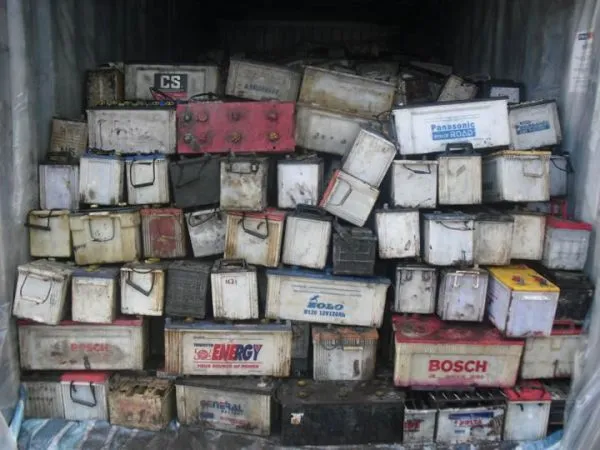Drained Lead Acid Battery Scrap

Drained Lead Acid Battery Scrap.. Lead acid batteries are made up of plates, Lead, and Lead oxide with a 35% sulfuric acid and 65% water electrolyte solution. Lead acid batteries represent almost 60% of all batteries sold worldwide.
Classification:
Generally there are two types of Lead-acid storage batteries, based on their method of construction Flooded or Sealed. Flooded (or wet) Lead acid batteries are those where the electrodes / plates are immersed in electrolyte. Sealed Lead acid or valve-regulated Lead acid (VRLA) battery where the electrolyte is immobilized. All Lead-acid batteries produce hydrogen and oxygen gas (gassing) at the electrodes during charging through a process called electrolysis. These gases are allowed to escape a flooded cell, however the sealed cell is constructed so that the gases are contained and recombined.
Lead Acid Battery waste Recycling
 The grid structure in both batteries is made from a Lead alloy. A pure Lead grid structure is not strong enough & therefore other metals like antimony, calcium, tin, and selenium in small quantities are alloyed for added strength and improved electrical properties.
The grid structure in both batteries is made from a Lead alloy. A pure Lead grid structure is not strong enough & therefore other metals like antimony, calcium, tin, and selenium in small quantities are alloyed for added strength and improved electrical properties.
The electrolyte in a Lead-acid battery is a dilute solution of sulfuric acid (H2SO4). The negative electrode of a fully charged battery is composed of sponge Lead (Pb) and the positive electrode is composed of Lead dioxide (PbO). The separator is used to electrically isolate the positive and negative electrodes.
Waste Batteries
The typical Lead-acid battery comprises of: metal grids, electrode paste, Sulphuric acid, connectors and poles of Lead alloy, and grid separators made up of PVC. The battery components are contained in corrosion and heat-resistant housing usually composed of plastic (polycarbonate, polypropylene, or polystyrene).